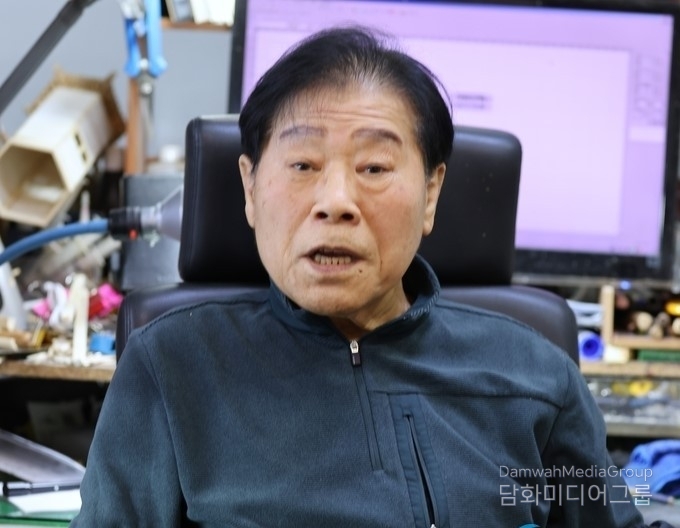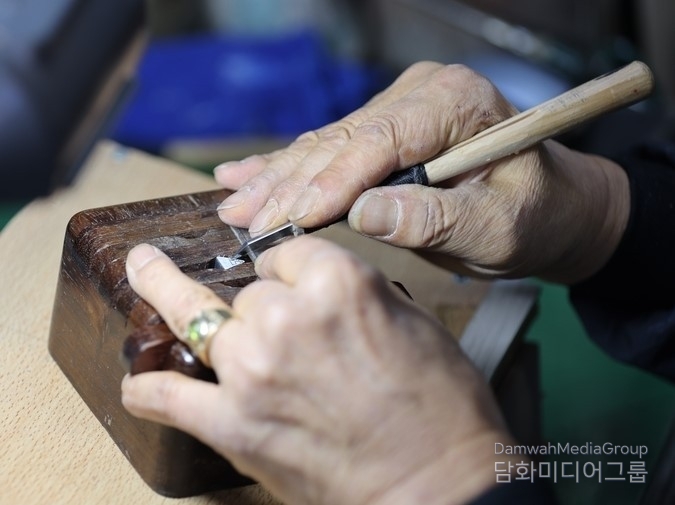By Diplomacy Journal Kayla Lee
At one time, Chung Hee-sung ran a small academy for not only seal work but also gilded craft work, and now he runs a small "workshop" in the basement of the Officer's Building on Samildae-ro in Jung-gu, Seoul.
Since the culture of seal has been slowly disappearing for a long time, his work has been cut off, and these days he spends his time making models of palaces and other tiled houses, and his workshop is filled with model castles, small palaces, and other figures.

People often talk about "seal carvers" or "seal sellers" as people who carve "names" on finger-sized pieces of wood or leave "signature" in a slightly larger square space.
Artisans who use carving knives to carve letters or pictures into wood are categorized as "seogak(calligraphy carving)" and "beongak (reprinting)." The former are designated as national intangible cultural properties or city and provincial intangible cultural properties, while the latter are completely ignored.

Beongak (reprinting)
It's a term that's rarely used in society, and it's a very precious term that's been used very long ago. When we look at the plaques of ancient palaces and temples, we often come across nice and solemn writing or drawings, which are called "seogak". The opposite of "seogak" is "bunghak," which means to dig out the letters in reverse to make a woodblock print. It is perfect for selling seals, but there is no reason to make signs upside down, so bungak artists are slowly disappearing.
At the end of the Joseon Dynasty, Korean novels such as Chunhyangjeon, Simcheongjeon, and Mrs. Park were printed using woodblock printing techniques, so "bungak artists" were properly honored until then.
However, as printing technology took over, this field also came to an end. At the time, we solved necessities of life with the seal painting work, but even this was replaced by a signature culture, meaning that the unique skills of the Korean people were slowly pushed aside by Western culture.
The oldest extant woodblock print in Korea, the Mugujeonggwangdaerani Sutra, was created in the middle of the 8th century and was made possible by the skill of bungak artists.
Chung Hee-sung uses a wheelchair all the time due to his leg problems. He says he always thank his wife enough for her support, as she's always there to help him commute to and from the studio.
When he doesn't have a job to do, he cuts, glues, and cuts thick paper into thin strips to make pavilions, palaces, and great houses of the ancient palace.
Chung said, “Looking at them, I imagine it is impossible to live in such a great house as a seal artist, so if I could make a model of a great palace, I might have a small dream or wish to live there, even in my dreams.”







